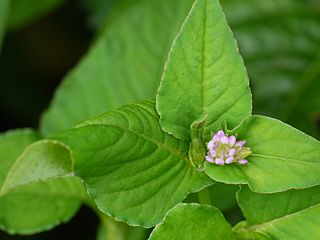|
Persicaria nepalensis
Persicaria nepalensis is a species of flowering plant in the family Polygonaceae, native to eastern Africa, including Madagascar, and parts of Asia. It has been introduced elsewhere: parts of Europe (including Great Britain), North America (including British Columbia, Connecticut, Massachusetts, New York and Pennsylvania) and northern South America.[2] The species was first described as Polygonum nepalense by Carl Meissner in 1826, and transferred to Persicaria by Hugo Gross in 1913.[1] (The same transfer was made later, in 1934, by Kingo Miyabe; as of 3 May 2019[update], Plants of the World Online used this transfer for the authorship of the combination.[2])
References
|
||||||||||||||||||||||||||||||


